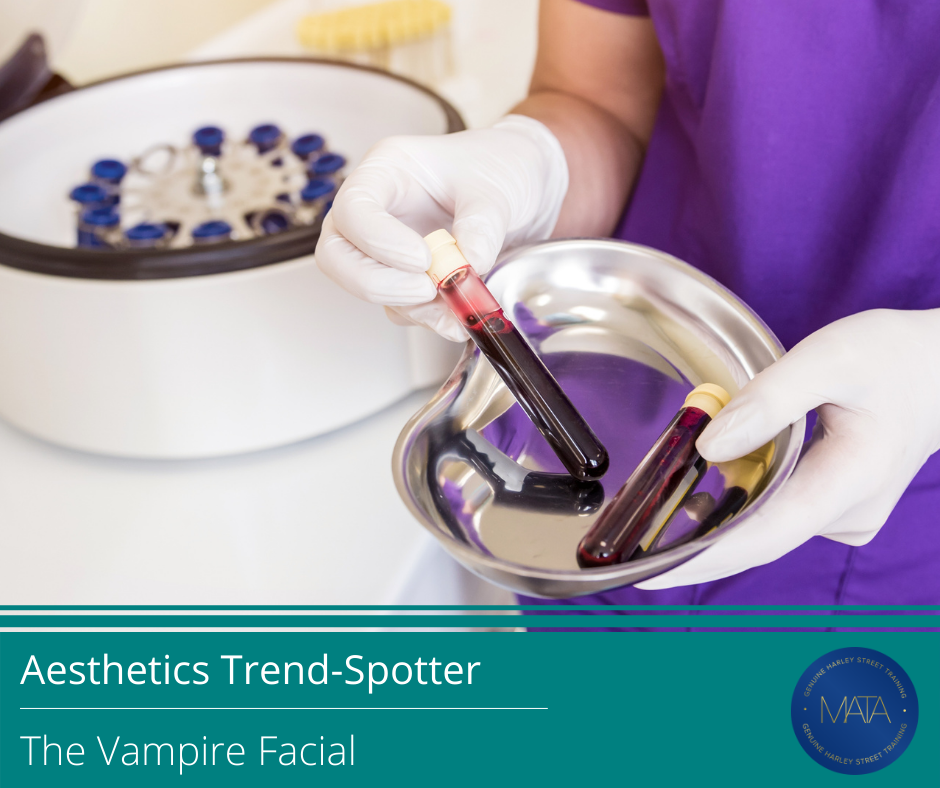It’s time to explore the latest facial aesthetic trends and discover how your clinic can help patients rejuvenate their appearance and feel more confident and beautiful.
Here are the 10 most popular facial aesthetic trends that are currently taking the UK by storm:
- Botox. Botox is a popular and effective treatment for reducing the appearance of wrinkles and fine lines on the face. The treatment involves injecting small amounts of Botox into specific facial muscles, causing them to relax and reducing the appearance of wrinkles.
- Dermal fillers. Dermal fillers are another popular facial aesthetic treatment that is used to plump and smooth the skin, reducing the appearance of wrinkles and fine lines. The treatment involves injecting a gel-like substance into the skin, providing immediate results that can last for several months.
- Laser treatments. Laser treatments are a popular option for improving the appearance of the skin, including reducing the appearance of wrinkles, scarring, and hyperpigmentation. The treatments use focused laser energy to target specific areas of the skin, providing long-lasting results.
- Skin peels. Skin peels are a popular treatment for improving the appearance of the skin, including reducing the appearance of wrinkles, scarring, and hyperpigmentation. The treatments use chemical solutions to remove the outer layers of the skin, revealing smoother and more youthful skin underneath.
- Microneedling. Microneedling is a popular treatment for improving the appearance of the skin, including reducing the appearance of wrinkles and scarring. The treatment involves using a tool with fine needles to create tiny punctures in the skin, stimulating the production of collagen and elastin for smoother and more youthful-looking skin.
- PRP therapy. PRP therapy is a popular treatment for improving the appearance of the skin, including reducing the appearance of wrinkles and scars. The treatment involves using a patient’s own blood to create a concentrated solution of growth factors and platelets, which are then injected into the skin to stimulate the production of collagen and elastin.
- Thread lifts. Thread lifts are a popular treatment for improving the appearance of the skin, including reducing the appearance of wrinkles and sagging. The treatment involves using special threads to lift and tighten the skin, providing immediate results that can last for several months.
- Non-surgical facelifts. Non-surgical facelifts are a popular treatment for improving the appearance of the face, including reducing the appearance of wrinkles and sagging. The treatments use a combination of techniques, such as dermal fillers, laser treatments, and PRP therapy, to provide a natural-looking lift and rejuvenation of the face.
- Non-surgical nose jobs. Non-surgical nose jobs are a popular treatment for improving the appearance of the nose, including reducing the appearance of bumps and asymmetry. The treatment involves injecting dermal fillers into the nose to provide a natural-looking lift and reshaping of the nose.
- Non-surgical chin augmentation. Non-surgical chin augmentation is a popular treatment for improving the appearance of the chin, including reducing the appearance of a weak or receding chin. The treatment involves injecting dermal fillers into the chin to provide a natural-looking lift and augmentation of the chin.
In conclusion, there are many popular facial aesthetic treatments available in the UK that can help improve the appearance of the face and reduce the appearance of wrinkles, fine lines, and other signs of aging. Whether you are looking for a subtle improvement or a more dramatic transformation, there is a treatment option
How to start an aesthetic clinic in the UK
Starting an aesthetic clinic in the UK can be a rewarding and challenging experience. As someone who has recently opened an aesthetic clinic in the UK, I can provide some insight into the process and offer some tips on how to start an aesthetic clinic in the UK.
First and foremost, it’s important to have a clear idea of what services your clinic will offer. Will you focus on treatments such as Botox and dermal fillers, or will you offer a wider range of services such as laser treatments and skin peels? Once you have a clear idea of what services your clinic will offer, it’s time to start planning and preparing.
One of the most important steps in starting an aesthetic clinic is to obtain the necessary licenses and permissions. In the UK, aesthetic clinics are regulated by the Care Quality Commission (CQC or HIS) and must be registered with the CQC or HIS in order to operate legally. The CQC and HIS website have more information on the registration process and requirements.
It’s also important to find a suitable location for your clinic. This can be a physical clinic, such as a standalone building or a suite within a larger medical facility, or it can be an online clinic. Whichever option you choose, it’s important to ensure that the location is easily accessible and meets the necessary regulations and standards.
Once you have a location and the necessary licenses and permissions, it’s time to start building your team. Aesthetic clinics require a wide range of professionals, including doctors, nurses, and aestheticians, as well as administrative and support staff. It’s important to hire experienced and qualified professionals who are committed to providing high-quality care to your patients.
Marketing and branding are also important factors in starting an aesthetic clinic. It’s important to create a strong brand and marketing plan that will help you attract patients and establish your clinic as a trusted provider of aesthetic services. This can include creating a website, using social media, and running promotions and advertising campaigns.
Finally, it’s important to provide excellent patient care and support. Aesthetic treatments can be intimidating and stressful for some patients, so it’s important to provide a welcoming and supportive environment that makes patients feel comfortable and at ease. This can include providing information and support before and after treatments, as well as offering follow-up care and support.
In conclusion, starting an aesthetic clinic in the UK requires careful planning and preparation. By obtaining the necessary licenses and permissions, finding a suitable location, building a strong team, and providing excellent patient care and support, you can create a successful and thriving aesthetic clinic.
What are the benefits of Botox?
Botox is a popular cosmetic treatment that is used to reduce the appearance of wrinkles and fine lines on the face. The treatment involves injecting small amounts of Botox into specific facial muscles, causing them to relax and reducing the appearance of wrinkles.
There are many benefits to using Botox, including the following:
- Botox is a non-invasive treatment. Unlike more invasive cosmetic procedures, such as facelifts or dermabrasion, Botox does not require any surgery or downtime. The treatment is quick and easy, with minimal discomfort and no scarring.
- Botox can improve the appearance of wrinkles and fine lines. Botox works by relaxing the facial muscles that cause wrinkles and fine lines, making the skin look smoother and more youthful. The treatment can improve the appearance of wrinkles on the forehead, around the eyes, and on the neck.
- Botox can improve self-confidence. Many people who have wrinkles and fine lines on their face may feel self-conscious or unhappy with their appearance. By reducing the appearance of wrinkles, Botox can help improve self-confidence and make people feel more comfortable in their own skin.
- Botox is a cost-effective treatment. Compared to other cosmetic procedures, such as facelifts or dermabrasion, Botox is a relatively affordable treatment. It is also a long-lasting treatment, with results typically lasting for several months before a follow-up treatment is needed.
- Botox is a safe and effective treatment. When performed by a qualified professional, Botox is a safe and effective treatment with minimal side effects. The treatment is FDA-approved and has been used for over 20 years.
In conclusion, Botox is a popular and effective cosmetic treatment that can improve the appearance of wrinkles and fine lines on the face. The treatment is non-invasive, safe, and affordable, making it an attractive option for people looking to improve their appearance.
10 ways to keep up to date with the latest trends in aesthetics
As someone who is interested in aesthetics, it’s important to keep up to date with the latest trends and developments in the field. Here are 10 ways to stay on top of what’s happening in the world of aesthetics:
- Follow influential aesthetic professionals on social media. Many aesthetic professionals, such as doctors and nurses, have social media accounts where they share the latest treatments and techniques. By following these accounts, you can stay informed about the latest trends in aesthetics.
- Attend industry conferences and events. Conferences and events are a great way to learn about the latest developments in the field and network with other professionals. Look for events that focus on aesthetics and make sure to attend any relevant sessions.
- Sign up for newsletters and email updates from industry organizations. Many organizations, such as the British Association of Aesthetic Plastic Surgeons (BAAPS), offer newsletters and email updates that can keep you informed about the latest trends in aesthetics.
- Read trade publications and magazines. Trade publications and magazines are great sources of information about the latest trends and developments in the field of aesthetics. Look for publications that focus on aesthetics and make sure to read them regularly.
- Join online forums and discussion groups. Online forums and discussion groups are a great way to connect with other professionals and learn about the latest trends in aesthetics. Look for forums and groups that focus on aesthetics and join in on the conversation.
- Take continuing education courses. Continuing education courses are a great way to stay up to date with the latest techniques and treatments in aesthetics. Many organisations, such as MATA, offer courses that can help you stay informed.
- Follow industry leaders on LinkedIn. LinkedIn is a great platform for staying up to date with the latest trends and developments in the field of aesthetics. Follow industry leaders and influencers on LinkedIn and read their updates to stay informed.
- Connect with other professionals on social media. Social media is a great way to connect with other professionals in the field of aesthetics. Follow relevant hashtags and join groups on social media to stay up to date with the latest trends.
- Read research papers and studies. Research papers and studies are a great sources of information about the latest developments in aesthetics. Look for papers and studies that focus on the latest treatments and techniques and read them to stay informed.
- Talk to other professionals in the field. Networking with other professionals in the field is a great way to stay up to date with the latest trends in aesthetics. Attend industry events and conferences, or connect with other professionals on social media to learn about the latest developments.
By following these tips, you can stay up to date with the latest trends in aesthetics and stay ahead of the curve in your field.
10 Things to Make Your Aesthetics Clinic More Successful in a Recession
As a business owner, it’s important to stay ahead of the curve and be prepared for any economic challenges that may come your way. During a recession, it can be especially tough to keep your aesthetics clinic successful. However, with the right strategies in place, you can not only weather the storm, but thrive despite the challenges. Here are 10 things you can do to make your aesthetics clinic more successful in a recession:
- Focus on customer service: Excellent customer service is always important, but during a recession, it can be the key to retaining and attracting new clients. Make sure your staff is trained to provide top-notch service, and consider implementing a customer loyalty program to reward your most loyal customers.
- Offer promotions and discounts: In tough economic times, many people are looking for ways to save money. Offer promotions and discounts on your services to make them more affordable for clients. Be sure to advertise these deals prominently to attract new customers.
- Diversify your services: In order to appeal to a wider range of clients, consider diversifying your services. This could mean offering new treatments or introducing new product lines. By offering a wider range of services, you’ll be able to attract a broader base of clients, which can help cushion your clinic against any downturns in the economy.
- Stay up-to-date on industry trends: It’s important to stay informed about the latest trends in the aesthetics industry. Attend conferences and workshops, read industry publications, and follow influencers in the field to stay on top of the latest developments. By staying current, you’ll be better equipped to adapt to changes in the market and offer the services that clients are looking for.
- Invest in marketing: Marketing is crucial for any business, but it’s especially important during a recession. Invest in targeted marketing campaigns to reach potential clients and remind existing clients of the value you offer. Consider offering referral bonuses to encourage current clients to refer their friends and family to your clinic.
- Focus on value, not price: During a recession, many people are looking for ways to save money. It can be tempting to lower your prices to compete, but this strategy can backfire. Instead, focus on the value you offer. Highlight the benefits of your services and the expertise of your staff. By focusing on value, you’ll be able to attract clients who are willing to pay for high-quality treatments.
- Build relationships with referral sources: Referrals are an important source of business for any aesthetics clinic. Build relationships with other healthcare providers, such as primary care physicians and specialists, who can refer clients to your clinic. Offer training and education to these referral sources to help them understand the benefits of your services.
- Invest in your staff: Your staff is the face of your clinic, and their skills and expertise are crucial to your success. Invest in training and professional development to ensure that your staff is knowledgeable and capable. A well-trained staff will be better able to provide high-quality treatments and excellent customer service.
- Be flexible and adaptable: A recession can bring unexpected challenges, so it’s important to be flexible and adaptable. Keep an eye on the market and be willing to change your approach if necessary. Consider offering new services or adopting new technologies to stay ahead of the curve and meet the changing needs of your clients.
- Keep a positive attitude: Finally, remember to keep a positive attitude. A recession can be a stressful time for any business owner, but it’s important to stay focused and remain optimistic. By staying positive and determined, you’ll be better equipped to weather any challenges and emerge from the recession even stronger than before.
In conclusion, a recession can be a challenging time for any business, including an aesthetics clinic. However, with the right strategies in place, you can not only weather the storm, but thrive despite the challenges. By focusing on customer service, offering promotions and discounts, diversifying your services, staying up-to-date on industry trends, investing in marketing, and focusing on value, you can attract and retain clients, even during a recession. Additionally, building relationships with referral sources, investing in your staff, being flexible and adaptable, and keeping a positive attitude can all help your clinic succeed, even in tough economic times.
Level 7 Diploma Special Offer

Our Best Ever Offer!
Save Over £2000 on our Level 7 Diploma with 5 Training Days.
Regular Price £7200*
Sale Price £4999*
*Prices inclusive of VAT
Save £2200 on our Level 7 Diploma with 6 Training Days
Regular Price £7700*
Sale Price £5500*
*Prices inclusive of VAT
Call 020 39766979 to Secure This Offer
Aesthetic Trend Spotter: The Vampire Facial

The Vampire Facial has grown hugely in popularity since Kim Kardashian’s 2013 grisly photo of herself midway through treatment, with over 232 thousand mentions on Instagram and 37.6 million views on TikTok. The treatment combines microneedling with platelet-rich plasma derived from the clients’ own blood; and it’s been claimed that the procedure can give a youthful appearance that rivals that created by injectables like Botox or filler.
How Is The Treatment Performed?
Step One – The Blood Draw: The blood is usually drawn from the arm, then placed into a centrifuge and spun to separate the red blood cells and the platelet-poor plasma from the Platelet-Rich Plasma.
Step Two – Facial Cleansing and Numbing: The clients’ face is cleansed and a numbing cream is applied to lessen the pain from the microneedling process.
Step Three – Preparation: The Platelet-Rich Plasma is drawn into a needleless syringe for ease of applying small quantities to the clients’ skin during the facial, and the microneedling device is prepared for use.
Step Four – The Facial: The Platelet-Rich Plasma is smoothed onto sections of the face, followed by the microneedling device. The microneedles push the plasma deep into the epidermis, alongside creating tiny controlled injuries to the epidermis that trigger skin healing and stimulates collagen production.
Downtime From the Vampire Facial
Although the Vampire Facial is ‘non-invasive’, this isn’t necessarily a treatment that clients can fit into their lunch break. It can cause swelling and redness for up to twelve hours following the procedure due to the microneedling process, so clients may prefer to make this an after-work treat.
Results From the Treatment
There isn’t a massive body of research on Vampire Facials. Still, practitioners and clients have reported that after a course of three treatments; the appearance of fine lines, acne scarring and skin roughness are much improved. The results from a course of Vampire Facials should last a client up to 12 months.
Risks of the Vampire Facial
Microneedling alone presents some risk to clients. Bacterial infections can occur if the skin or the machine is not cleansed properly. Clients with darker skin tones are also at risk of Post-Inflammatory Hyperpigmentation (PIH), which leaves darker patches of skin in the treated areas.
When blood is added to the microneedling procedure; other, scarier risks come into play. Two clients at a New Mexico salon in the USA contracted HIV after having Vampire Facials, potentially as a result of cross-contamination. Although this may be an isolated case, it is still something that clients should be aware of before undergoing the treatment.
At MATA, we see non-ablative laser treatment as a safe alternative to the Vampire Facial, improving the appearance of fine lines, scarring and skin texture without breaking the skin or requiring blood handling. To register your interest in our newly restructured Laser and Light qualifications, please complete this webform.
Is the Vampire Facial Here to Stay?
Although the Vampire Facial may have become popular due to a celebrity endorsement, almost ten years on it is still a favourite; available in clinics across the UK and the world. As such, it would seem like the procedure is here to stay. As always, we recommend that clients are made fully aware of the risks and rewards of the treatment. In the case of this particular treatment, we’d also recommend that the procedure takes place in a suitable setting and is carried out by a practitioner with experience in the safe handling of blood products.
Patient-First Care: Managing Client Expectations in Aesthetics

In a world filled with filters, Facetune and PhotoShop; it’s becoming more and more likely that clients may visit your clinic with unrealistic expectations of what can be achieved with Botox and dermal fillers. As a responsible aesthetic practitioner, you have a duty to ensure your patients understand whether the results they have in mind are possible and to adjust this to a more realistic level if needed. It can be difficult to know how to accomplish this, so to help, here are MATA’s top five tips for managing client expectations in aesthetics.
1. Maintain An Honesty Policy
Although of course having a book filled with clients is an admirable goal, there is no substitute for having and keeping a reputation of safe, responsible aesthetics practice. If a client comes to you with an impossible request, then be confident in your ability to tell your client exactly what you as a practitioner can achieve with aesthetic injectables, and refrain from overselling what you or the product can do. Even the best practitioner has limits, and it will only benefit your clinic to make sure your clients understand this.
2. Have a Real Conversation with Your Clients
Although consent forms are a legal necessity for your clinic, they should never take the place of a real conversation with your clients which covers the risks and rewards of their chosen aesthetic treatment. This conversation will not only allow you to identify any unrealistic expectations and manage them appropriately, but will also ensure that your clients commit to the procedure from a fully informed position.
3. Make Use of Visual Aids
It’s likely that you already have a stock of before and after photos from your existing clients to allow you to provide treatment continuity. If you have the necessary permissions to use these images for business purposes, then these before and after shots can give prospective clients a real look at the changes that are possible with aesthetic injectables.
Having a Lookbook of before and after images covering a variety of treatments will also help illustrate that some looks take time and multiple visits to accomplish. Clients may visit you with the expectation that lips can go from thin to Jenner-style voluptuous in a single treatment. Being able to show them that this isn’t possible, with reference to real cases, will often make your client far more receptive to building a treatment plan with you.
4. Be Aware of Apps, Influencers and Advertisers
With the rise of apps that allow the face and body to be heavily filtered and reshaped, even in video; influencers and advertisers have been in the spotlight for promoting looks that are unrealistic or even physically impossible. Maintaining a professional awareness of image-editing apps, the effects they can create, and even having a bank of unedited vs edited images available, can all help you manage client expectations in your aesthetics practice.
5. Feel Comfortable Saying No
It’s inevitable that during your career in aesthetics, some clients will simply not listen to your advice regarding treatment. Although it may be tempting to carry out the procedure; when the results inevitably don’t match expectations, these clients can and will cause problems for your business. In the end, it is far better to let these clients go than to lose your reputation as an aesthetics practitioner.
From Babies to Botox – Opportunities for Midwives in Aesthetics

Ask most midwives in the UK why they entered the field, and they’ll give you a similar answer – to help women at one of the most vulnerable points in their lives. Yet current conditions in the NHS means that midwives are facing low pay, long hours, bureaucracy and burnout, and in a 2019 study it was found that over 33% of midwives were experiencing work-related stress, anxiety and depression. Midwives in the UK deserve to work in an environment where they face less stress, have a better work-life balance, have the opportunity to directly help their patients, and where they are paid appropriately for their years of study and professional experience. The aesthetics industry provides an environment where all of this is possible.
Why Working in the Aesthetics Industry Could Be the Perfect Next Step For Midwives
The aesthetics industry is booming worldwide. Demand for Botox and dermal filler treatments has risen every year, with the UK expected to spend upwards of three billion pounds on aesthetic injectables in 2021. Midwives are ideally placed to take advantage of this demand, with their wealth of experience in clinical settings and in patient-centred care incredibly transferable to aesthetics practice.
Midwives who have joined aesthetics have found that the move has positively impacted their lives, with the costs of training outweighed by benefits including:
- A much better work-life balance with the freedom to set their own schedule.
- The time to build real connections with their clients and to see the improvement in confidence that aesthetic treatment can create; often still helping women at a vulnerable point in their lives.
- The ability to work independently without the stresses of red-tape, shift-work and targets.
- The opportunity to learn new and exciting techniques.
- A significant increase in earning potential, often enough to leave midwifery and focus solely on aesthetic practice.
Take the First Step in Your Aesthetics Training Journey
Given demand, there has never been a better time to invest in your future and experience these benefits for yourself. MATA offers a range of training options for nurses; whether you’d like to take things step-by-step with our Foundation Course; or if you want to develop both your practical skills and theoretical knowledge through our Level 7 Postgraduate Diploma in Facial Aesthetics. Whichever you choose, you can be confident that our courses are flexible around your schedule, and have been created to give you the best possible start in a new industry.
At MATA, we’ve watched with pride as our midwife delegates have flourished in the aesthetics industry, whether they’ve joined existing clinics or have set up their own business; and we look forward to welcoming more midwives to our worldwide community of aesthetics professionals.
To discuss taking the first step on your journey towards a fulfilling career in the aesthetics industry and explore training opportunities with MATA, call us today on 020 3976 6979.
Should Dermal Filler be Reclassified as Prescription-Only?

Despite the overwhelming rise in popularity of aesthetic injectables, legislation and regulation of the aesthetics industry has not kept pace. This has led to botched dermal filler treatments going viral on social media and to a growing demand from practitioners and the media for greater government oversight of aesthetic injectables practice. In 2019, an All-Party Parliamentary Group (APPG) on Beauty, Aesthetics and Wellbeing was formed and in July 2021 they published their concluding report. This featured a number of recommendations for legislative action and regulatory oversight, including a call to reclassify dermal filler as a prescription-only medication.
Current Dermal Filler Classification
At the moment, Botulinum Neurotoxin is a prescription-only medication, only available from a trained prescriber after a face-to-face consultation with clients to ensure treatment suitability. In contrast, Dermal Fillers are currently classed as a medical device and are freely available for purchase and use by non-medics, with no need for a prescriber to assess clients beforehand.
This lack of medical oversight is a point of concern not only the APPG, but for voluntary bodies within the aesthetics industry including the Joint Council for Cosmetic Practitioners and the British Association of Beauty Therapy & Cosmetology; who have highlighted that “risks of fillers are significant and arguably even greater than those posed by botulinum”.
These risks have been on full display across the media over recent years. Leah Morton, a 26 year old woman from Liverpool, was left at risk of losing her nose after a practitioner caused and then failed to recognise a vascular occlusion during a non-surgical rhinoplasty. Dr Tijion Esho, an experienced aesthetic practitioner and medical professional, shared a clip that showed him treating lip cysts caused by superficial filler placement. Meiska Mamajeski, a 53 year old woman from Leeds was blinded in one eye when her practitioner injected directly into her eye rather than the skin around the eye in 2015.
Proposed Changes
Dermal fillers must be performed under the oversight of a prescriber who has gained the accredited qualifications to prescribe, supervise and provide remedial medicines if necessary.
All-Party Parliamentary Group on Beauty, Aesthetics and Wellbeing
The APPG has recommended that dermal filler be reclassified from Medical Device to a Prescription Only Medication, with the view that this would “remove a significant danger to the general public.” It would make it necessary for all dermal filler providers to ensure that their clients are seen and assessed by a medical prescriber before treatment, helping to ensure that clients are suitable for treatment and that medication such as hyaluronidase can be quickly accessed should the procedure go wrong. This would allow for rapid treatment of vascular occlusions, should the practitioner have the skill to recognise and treat this complication.
MATA’s Opinion
MATA was established with the aim of standardising training in aesthetic injectables within the UK Aesthetics Industry, and as such we welcome greater legislation and regulation. Making dermal fillers prescription-only would be a positive step in the direction of establishing a properly monitored aesthetics industry.
Still, we must highlight that medical and aesthetic professionals have been seeking greater oversight of aesthetic injectables for years. Sir Bruce Keogh noted in his 2013 report that “dermal fillers are a crisis waiting to happen” and suggested that they be made prescription-only; yet almost a decade later, fillers are still freely available and the aesthetic industry is still under-regulated.
It remains to be seen whether the UK Government will work with the MHRA and Manufacturers to reclassify dermal fillers as prescription only. For now, we will continue to train our delegates to a high standard in both the theory and practice of aesthetic injectables through our Level 7 Diploma in Facial Aesthetics, ensuring that they enter practice with the skills they need to recognise and manage complications. We are also committed to supporting the activity of voluntary bodies in the aesthetics industry in their work to regulate and monitor our industry.

